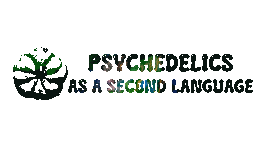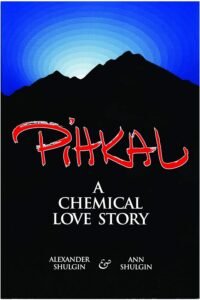Sassafras: The history behind the MDMA precursor
Lately, an acronym has been around everyone’s mouths, in some for its potential as a therapeutic tool, in others for the recent dilemma after the FDA denied its use as an adjacent for the treatment of PTSD. We are talking about MDMA.
We have all heard about the story of Sasha Shulgin re-discovering MDMA from a World War II book and becoming coined as the ‘Godfather’ of MDMA by the media (which he publicly claimed to hate.) But did you know that at some point in history, MDMA had a natural precursor?
A plant that goes under plenty of people’s radars and suddenly became absent from psychedelic history after the mass destruction of specimens by the US government, leading to the endangerment of its species after MDMA became popular in nightclubs, this plant is Sassafras.
A common tree found throughout the United States with a long history of sacred use by various Native American tribes such as Cherokee, Chippewa, Choctaw, Creek, Delaware, Oklahoma, Houma, Iroquois, Koasati, Mohegan, Nanticoke, Rappahannock, and Seminole.
Traditionally, Native American tribes used Sassafras leaves to treat ailments such as fevers, rheumatism, and digestive issues. When used in teas and infusions, sassafras leaves can help promote sweating, reduce fever, and alleviate symptoms of colds and respiratory infections. Their mild diuretic effect can also aid in detoxifying the body by promoting urine production and helping to flush out toxins.
But what could be the reasoning behind such properties?
When mentioning botanical healing, it’s always near impossible to answer what the specific compound responsible for the healing spectrum. For the simple reason of a theory that has been gaining traction these past years, the Entourage Effect, as far as we can predict, Safrole, the main alkaloid in Sassafras, could be the reasoning behind the reported effects in Native American medicinal history, and also in recent studies where the compound demonstrated promising results as a potential antidiabetic, antioxidant, antimicrobial, and anticancer compound. Safrol contains α-amylase and oxidant inhibitory activity compared to Acarbose and Trolox, especially when we can compare it to other plants with the same alkaloid and are known to have similar effects, such as black pepper and cinnamon.
Even with the potential benefits of Safrole present in several years of Native American history, the compound gained its first admiration as a culinary spice in the early 20th century when it was used as a flavoring agent in food and beverages, most notoriously in the production of root beer. The compound got its first ban in the 60s from food products in the US due to studies indicating that it could be a potential carcinogen in high doses.
This newly found threat and ruckus about Safrole matched nearly in a weird manner the time that Alexander Shulgin accidentally found reports of Merck from 1912 by the chemist Anton Köllisch. Considering this was solemnly a byproduct of developing vasoconstrictors, MDMA had no formal pharmacological testing or trials, and only its synthesis was patented.
When finding the lack of pharmacological data, Shulgin saw that structurally, the compound was likely to have a psychedelic effect, as the compound is a derivative of methylenedioxyphenethylamine (3,4-MDPEA), and gathered the similarities between the methylenedioxy ring, the essential part of the MDMA molecule to be present in Safrole. Hence, Shulgin used Safrole as a precursor to his synthesis in the 1970s.
Such methods spread like wildfire in the underground scene and may still be used to date for their practicality.
We must note that the fact that Safrole, a potential carcinogen, is used as a step in MDMA synthesis doesn’t make the compound a carcinogen in any shape or form.
However, not everything is perfect with MDMA, and patients with preexisting health conditions, such as cardiovascular diseases (Hypertension (high blood pressure), arrhythmias (irregular heartbeats), previous history of heart attack or stroke, patients who are taking SSRIs, MAOIs, or other stimulants, individuals with seizure disorders, pregnant or breastfeeding individuals, shouldn’t take this compound.
To those who are just entering the world of psychedelics or pharmacology in general, this might seem more than enough reason for the FDA to deny the treatment, but to those who are in this realm for a longer time can tell you that it’s quite often not only to witness these precautions are more common than you might think in psychedelic compounds and FDA approved medications, especially when we look at compounds used in the treatment of mental illnesses.
So, what was the reasoning behind FDA’s denial of the MDMA therapy presented by Lyokos?
According to a report by the Institute for Clinical and Economic Review (ICER), there were several issues in the trials conducted by Lykos.
One major concern was the potential bias stemming from the involvement of trial participants and therapists as part of the psychedelic community. Some participants had prior experiences with MDMA, and therapists may have unintentionally influenced patients’ outcomes due to their beliefs about the drug’s effectiveness, thus “unblinding” the experience.
Additionally, the report highlighted concerns about the pressure on participants to report positive results. Some patients reported feeling uncomfortable with disclosing negative outcomes, fearing repercussions within the psychedelic community or that they could be hindering access to psychedelic therapy.
Given these issues, ICER deemed the evidence “insufficient” to make conclusions about the balance of benefits and harms associated with MDMA-assisted psychotherapy.
Nonetheless, this should not be seen as a defeat for psychedelic-assisted therapy but as an opportunity to generate better trials and pave future trials to be accepted by the FDA.



